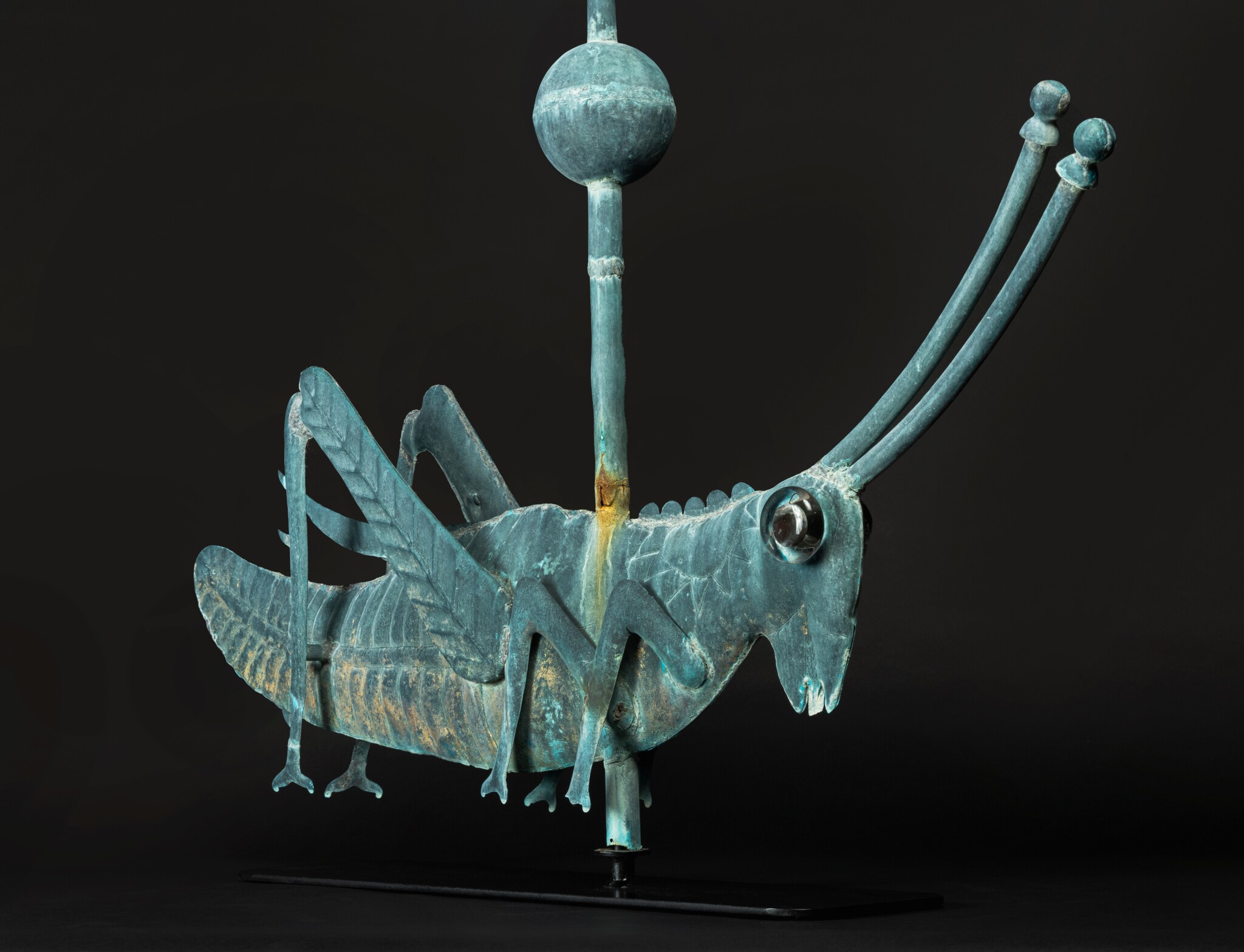The Return of Peter Faneuil’s Grasshopper?
On 23 January, Sotheby’s will auction off what it says is the grasshopper weathervane that Shem Drowne crafted for Peter Faneuil’s summerhouse before 1743, as discussed yesterday.
The auction house’s announcement goes into detail about Drowne’s other, long-documented weathervanes and the short paper trail of the summerhouse grasshopper.
It also says the summerhouse weathervane “disappeared into obscurity” after the demolition of the Faneuil mansion in the 1830s. Which is one way to acknowledge there’s no provenance at all for the object on sale before the twentieth century.
The record begins:
The silhouette of this grasshopper does match the one on top of Faneuil Hall (and not all sculptors shape grasshoppers that way). They’re about the same size. Both creatures have copper bodies and glass eyes.
The one on Faneuil Hall has been regilded multiple times over the years. The one now offered for sale is mostly green, but Sotheby’s says it shows “traces of gilding,” which I presume would be unusual for a weathervane made for a barn.
Then again, it’s conceivable that some metalworker in the Colonial Revival period fashioned a version of Shem Drowne’s famous grasshopper for customers who liked historic American style.
Sotheby’s estimated price for this weathervane is $300,000–500,000.
The auction house’s announcement goes into detail about Drowne’s other, long-documented weathervanes and the short paper trail of the summerhouse grasshopper.
It also says the summerhouse weathervane “disappeared into obscurity” after the demolition of the Faneuil mansion in the 1830s. Which is one way to acknowledge there’s no provenance at all for the object on sale before the twentieth century.
The record begins:
It was acquired in Massachusetts circa 1900 by Captain Lucius Bradford (1864-1939) of Newport, New Jersey who was told that it had been on top of a New Hampshire barn. He stored it inside as a decoration, and it was inherited by his son Leslie Bradford (1895-1987). It continued to be passed down through successive generations of the family until purchased by the current owner.As I read that webpage, whoever sold the weathervane to Lucius E. Bradford didn’t claim that it had spent time over Boston. Someone—either the “current owner” or an appraiser or Sotheby’s own experts—recently hypothesized this was the weathervane from the Faneuil house.
The silhouette of this grasshopper does match the one on top of Faneuil Hall (and not all sculptors shape grasshoppers that way). They’re about the same size. Both creatures have copper bodies and glass eyes.
The one on Faneuil Hall has been regilded multiple times over the years. The one now offered for sale is mostly green, but Sotheby’s says it shows “traces of gilding,” which I presume would be unusual for a weathervane made for a barn.
Then again, it’s conceivable that some metalworker in the Colonial Revival period fashioned a version of Shem Drowne’s famous grasshopper for customers who liked historic American style.
Sotheby’s estimated price for this weathervane is $300,000–500,000.


No comments:
Post a Comment